The Nihonbashi quarter was located around the Nihonbashi bridge. Here there were dwellings and shops of the most successful Edo merchant class, for example, the trading houses of the houses
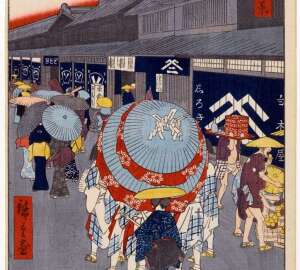

The Nihonbashi quarter was located around the Nihonbashi bridge. Here there were dwellings and shops of the most successful Edo merchant class, for example, the trading houses of the houses
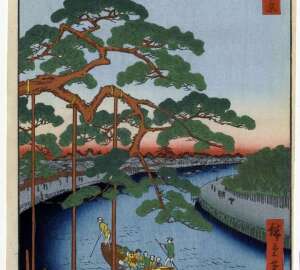
Once on the banks of the Onagigawa Canal five pines grew, but by the time of creation of this engraving, only one pine had survived, which Hiroshige depicted. Although the
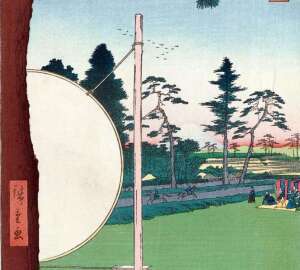
Hiroshige depicts one of the training grounds in the north-western suburb of Edo, built in 1636 by order of the third shogun Iemiju in the territory of the house of
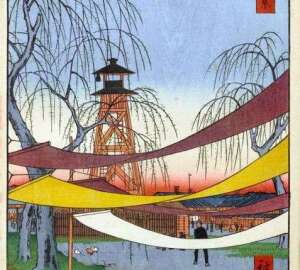
The name “Bakurote” comes from the name of the horse traders – Bakuro and means “Feeding the horses”. Bakurote was the starting point of the Osjukai-do tract. Here was the
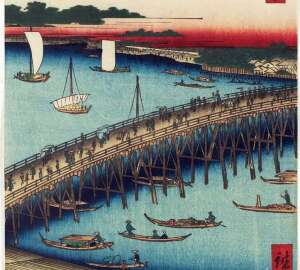
After a major fire “Nakasode”, which occurred in 1657, one of the main bridges of the Eastern capital – “Ohashi” was built. But the name of Regokubashi, the Bridge of
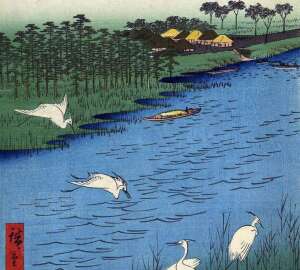
The Sakurakaido tract led into the Simousa-no kuni sakura area, the path traditionally began from the Nihonbashi bridge in Edo. Further, it passed through the Khondze area, along the Tategava
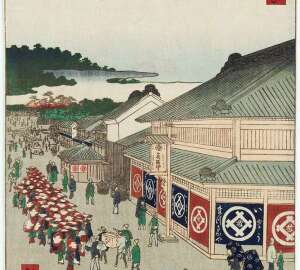
The name Sitaia came from the location of this place by the Ueno hill. Here passed the road Sitayahirokokzi, along which the shogun came to the temple of Kanailzi. After
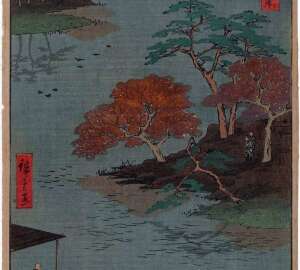
Hiroshige depicted the territory of the sanctuary Akiba-digongensya in the village of Ukietimura. It was built on the donation of the lime Honda in 1702. The shrine is dedicated to
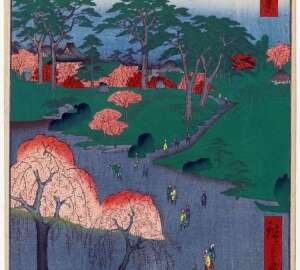
Nippori was located between Yanaka and Dokanyama in the northwest of the Ueno and Asukayama mountains. In the east, there were cliffs, from which a beautiful view of the rice
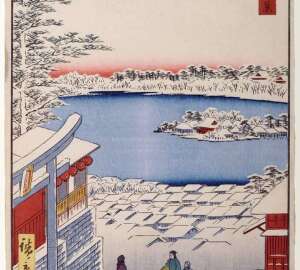
In front of the spectator a winter landscape opens with a view of the pond Sinobadzu no Ike. In the heart of the pond on the island was the sanctuary
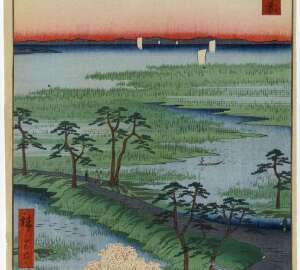
Until the middle of the 17th century, the area of Susaki in the east of Fukugawa was under the waters of the Gulf. In 1659, Sunamura Sindzaemon from Osaka drained
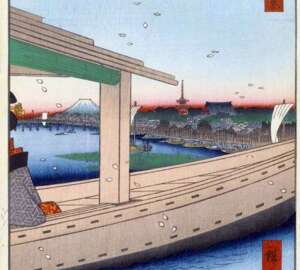
The monastery Kinryudzan – the Mountain of the Golden Dragon – is known in another reading as Asakusa-dera. The five-story pagoda and the massive hondo building, painted in red, are
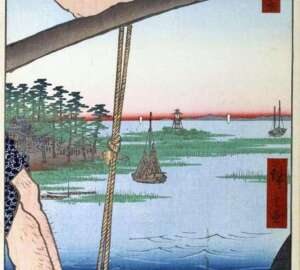
In this engraving, Hiroshige uses the same method of contrasting contrasting plans, sharply pushing the feet and hands of the boatman to the forefront. Hiroshige chooses the most characteristic motive
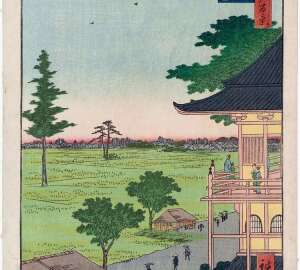
Rakandzi’s temple belonged to Obak-shu, one of the directions of Zen Buddhism, which came from China in the 17th century. He was among the rice fields between the rivers Tategava
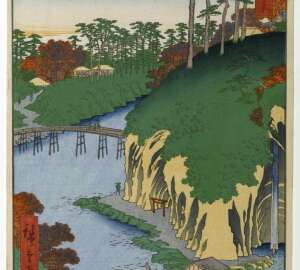
The hill stretching from the mountains of Ueno to Asukayama was crossed by the river Syakudzigawa. The viewer has a view of the part of the river passing through the